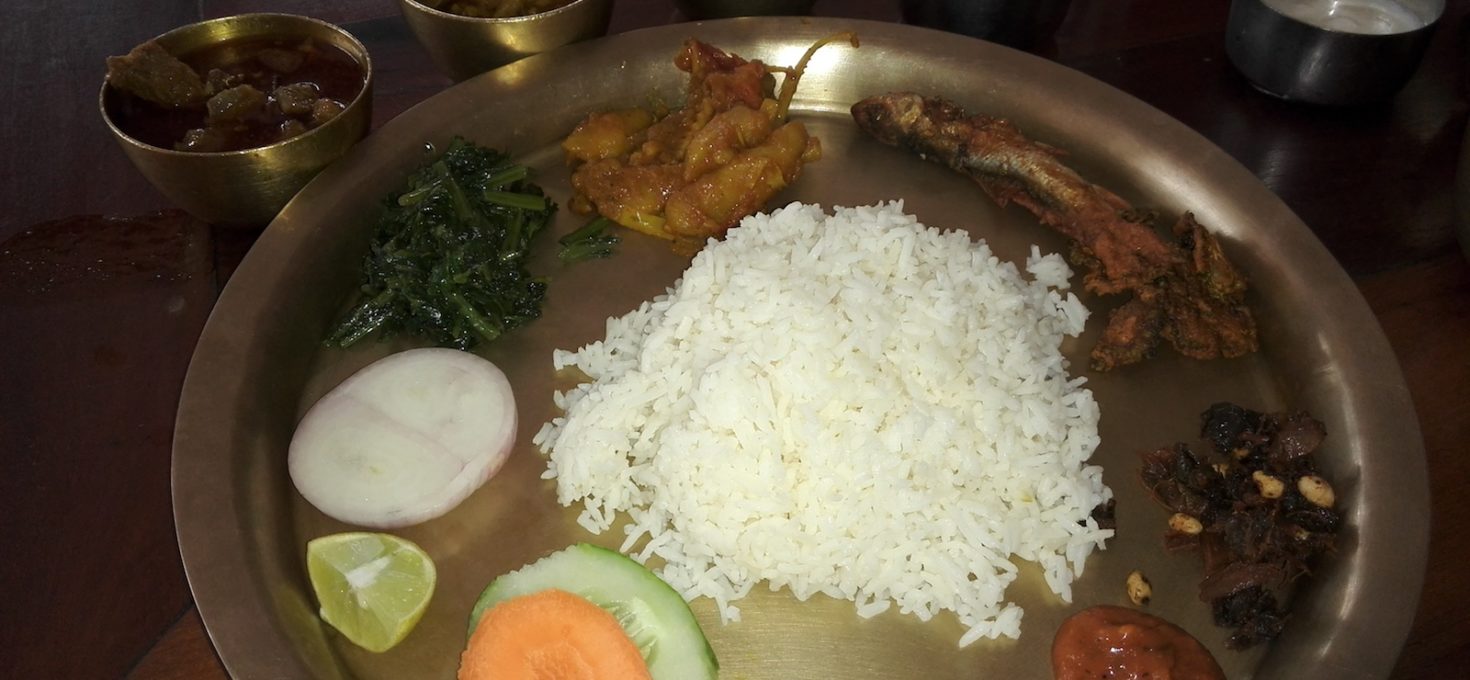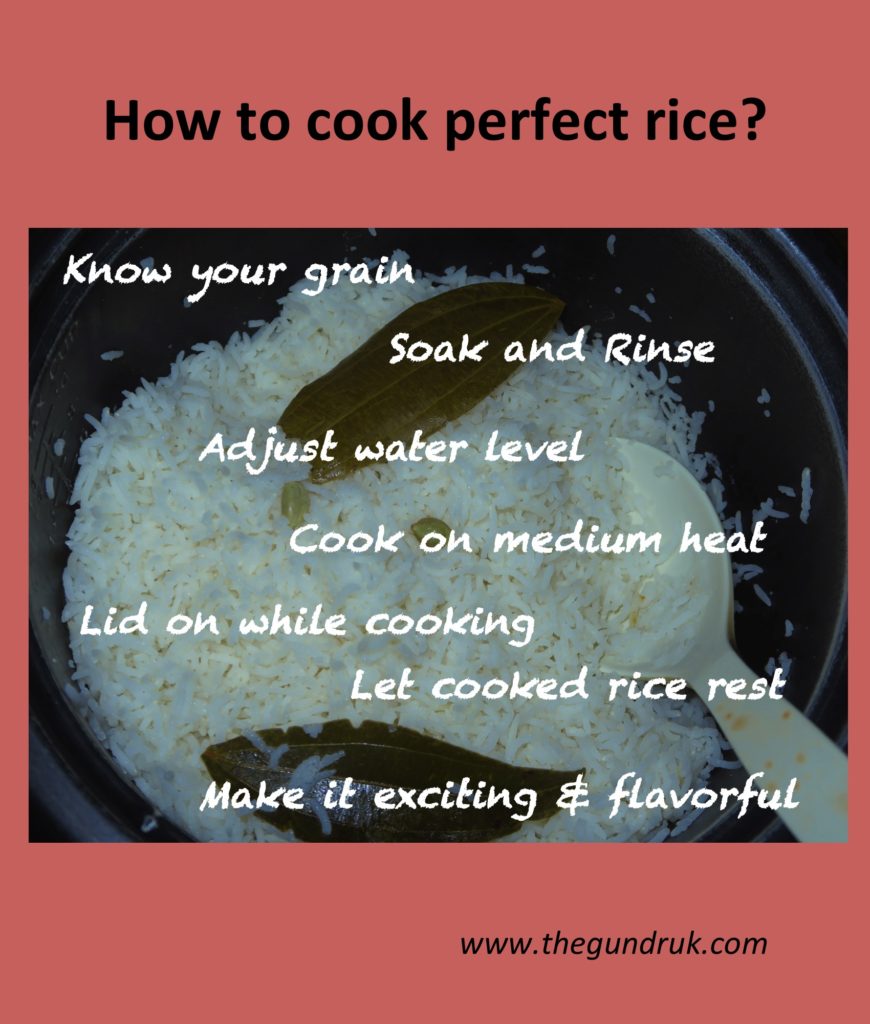Rice is the main staple of Nepali people and eaten with varieties of dishes such as vegetable curry, meat curry, lentil or bean soup (daal), fresh or fermented pickles etc. We generally eat it every day for both lunch and dinner, and sometimes for breakfast or mid-day meals by frying leftover rice (bhuteko bhaat). Cooking rice is very simple and easy but requires some techniques and experiences to cook it perfectly. I have learned to cook rice from a very young age. Here I have rounded up some techniques and tips based on my experience.
Soak the rice before you cook
Soaking rice in warm or normal water will make the rice soft and fluffy. You can really feel the difference from the one cooked without soaking. Put rice in a pot you are cooking and add water enough to fully submerge grains, and leave it to soak for about 15-20 mins. Use warm water during winter. Avoid soaking for grains for a long time as they tend to break down while cooking. However, brown rice, black rice and marsi rice which has less permeable outer membrane need to be soaked for at least a couple of hours.
Rinse the rice
Once the grains are soaked, stir with your hand and rinse to remove any impurities and extra starch. Do not wash grains vigorously as it might break down and also remove essential nutrients present on the surface of the rice. Rinsing once should be more than enough but if it is very starchy you may rinse it twice.
Adjust water level
The thumb rule is to add water double the amount of rice – it can’t go wrong. However, the amount of water required to cook the rice perfectly largely depends upon the varieties and age of rice and pots in which rice will be cooked. Know your grains first before you cook. Rice harvested a year ago or more generally requires more water than recently harvested one because of less moisture content. If you are cooking in a pressure cooker, always add a quarter less water than the thumb rule amount.
Cook over medium heat first with always lid on and stir at least once
Cooking over very low heat and very high heat might result in uncooked rice unless you are using a pressure cooker. Medium heat is best for all types of pot used. Always put the lid on while cooking the rice. Also, watch out for rice boiling out of the pot. If it tries to boil out, incline the lid slightly to let the steam out easily for few minutes until the water level slightly goes down. Put back the lid and cook further.
Give a stir at the middle of cooking
It is important to give a stir at the middle of cooking (while boiling) to make sure that rice grains are evenly cooked.
Lower the heat at the end of the cooking process
Once the moisture is almost reduced-it stops boiling and starts steaming, you have to lower down the heat to lowest and cook it for another 5-10 mins with lid on. When the steam coming out of the pot weakens, you know that there is no moisture left and it is time to turn off the heat. If you are using a pressure cooker one or two whistle is more than enough for rice.
Note: Pinch grain using your fingers to check if rice is cooked perfectly. In case if it is not, add some hot water (no cold water strictly), give a stir and cook it in low heat with the lid on for few more minutes.
Let it rest (very important)
Once you turn off the heat, it is very important to let it rest for at least 5-10 minutes either it will be soggy and not very soft and fluffy. In the Nepali language, we have especially term for this called ‘Jhas jana dine’ which literally means allow remaining moisture to escape.
Make your rice exciting and flavorful
If you want to make rice further exciting and flavorful, you can use various aromatic spices such as cardamom, bay leaves, cinnamon, cloves, star anise, saffron, turmeric powder etc. Just add your preferred whole spices while cooking rice. Adding just a knob of butter or ghee further enhances the flavor of the rice.
For making Nepali’s delicacy ‘Ghiu-bhaat’, which means rice cooked in ghee, you can add few tbs of ghee in pot, fry fenugreek seed and then add soaked rice (at least for a couple of hours). Stir it for a minute using a wooden spatula (or the one that doesn’t have sharp edges to avoid breaking the rice grains) and add some hot water, and let it cook in medium heat with lid-on.
Here is another recipe for making sweet rice delicacy called ‘Latte‘ using Anadi rice- traditional local varieties of sticky rice found in Nepal.

